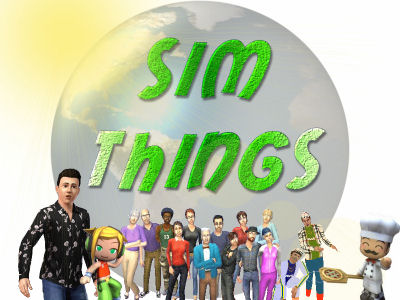This quiz is all about toys, telly, life at school and what we had for tea way back when.
Can you guess what these quotes are describing?
1. Let us delve first into the world of toys...
2. Now back to school for this one...
3. For lighter entertainment, a telly programme...
4. Look no further than the computer lab for this one...
5. Spend and save?
6. A little light reading, perhaps?
Copy of Buster and a 10p mix bag to anyone who gets these right.
Can you guess what these quotes are describing?
1. Let us delve first into the world of toys...
Virtual reality that didn’t require a million gigabytes of processing power, Pierce Brosnan or low self-esteem, [this] impressively started life as a military training tool during World War Two before hitting critical mass in the late 1970s as the nearest thing to actually being in Hazzard County. Basically a pair of red binoculars in which you’d insert a circular cardboard disc punched out with film cells, the contraption presented each eye with a slightly different left and right image which merged to form . . . 3D!
2. Now back to school for this one...
Arcane Swiss sociology exported as near-naked prancing on splintering wooden floors. For decades after World War Two primary school kids had their cognitive skills ostensibly honed by the aural equivalent of cod liver oil: a frosty-voiced BBC matron encouraging them to act out an activity in time with a piece of music picked out in lacklustre fashion on a battered piano. Quick, get into a space, it's time to do ‘our wide dance’.
3. For lighter entertainment, a telly programme...
With its impossibly jaunty music and menagerie of mangy marionettes, this was a pre-school treat par excellence. There was Topov a scary looking monkey from the Far East, Pig – a Brummie hog that reinforced a whole swathe of regional stereotypes, and – best of all – the bitchy and (in retrospect) somewhat camp Hartley Hare. Each episode would deliver a homespun homily on such matters as the importance of being a good friend, or, as was the case on more than one occasion, the crushing inevitably that is death.
4. Look no further than the computer lab for this one...
The corporation’s very own home computer. Released in 1981, for a few years it popped up on almost every BBC1 programme going (even implausibly doubling as the TARDIS computer in an episode of Doctor Who). In the real world, you would mostly find it in the home of bearded academics or young would-be programmers. However its real ubiquity was in the arena of academia. [This] made its way into almost every school in the land – not that teacher ever allowed you to play with it mind.
5. Spend and save?
The godfather of the Nectar Card, in the 1970s these perforated mint tokens were liberally distributed alongside every transaction at supermarkets and petrol stations as a promotional incentive. At their peak, [these] almost acted as an alternative national currency, enabling collectors to dutifully stick them into albums which could be bartered for a tantalising array of household goods, like toasters and pressure cookers, at their neighbourhood "redemption centre". It was just like being on the Generation Game conveyor belt!
6. A little light reading, perhaps?
’Two comics in one – double the fun!’ The simple concept of splitting a common-or-garden comic into two 'rival' sections – perhaps the inspiration for the Sunday Times – was a masterstroke. For 21 years, the nation's kids nailed their colours to the mast and proclaimed themselves either a Whizz-kid (official colour: red; leader: Sid, an unexceptional kid with a pet snake) or a Chip-ite (official colour: blue; leader: Shiner, a hapless boy who couldn't help getting into scrapes).
Copy of Buster and a 10p mix bag to anyone who gets these right.

 Home
Home Overview
Overview Gallery
Gallery Register
Register Log in
Log in





